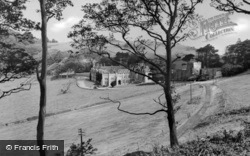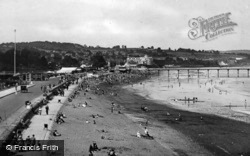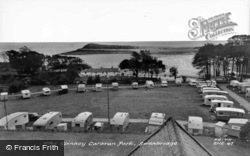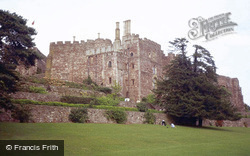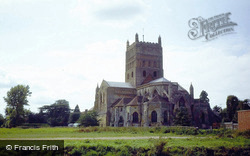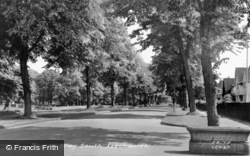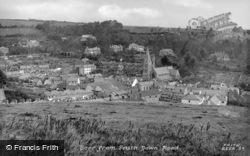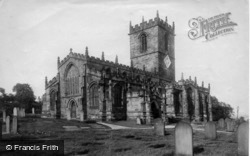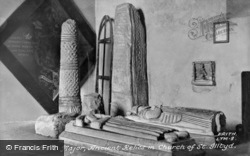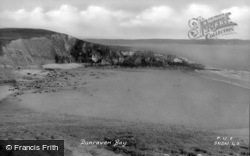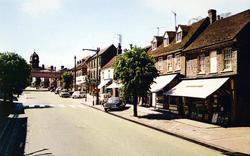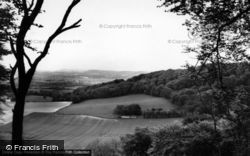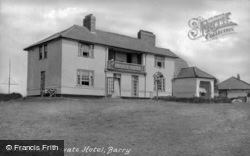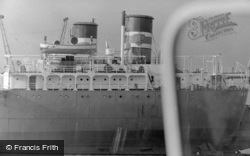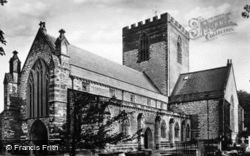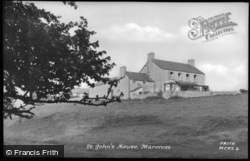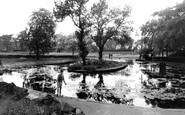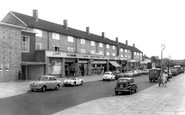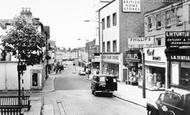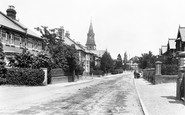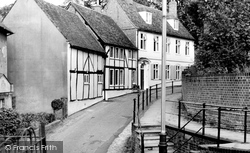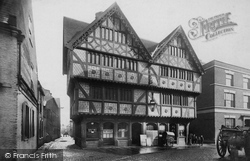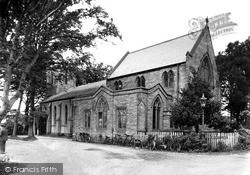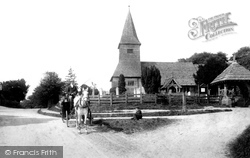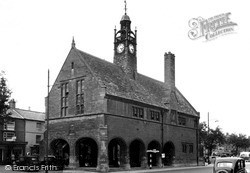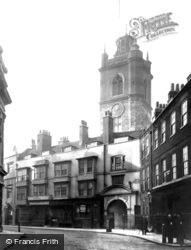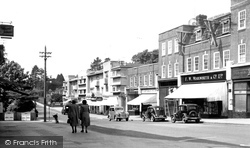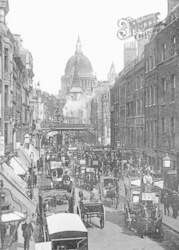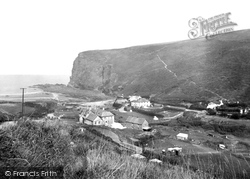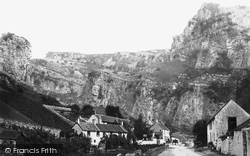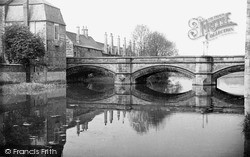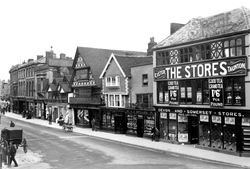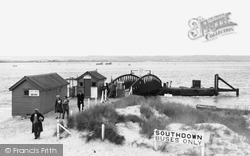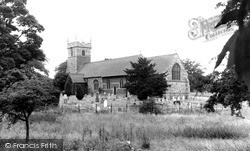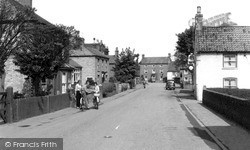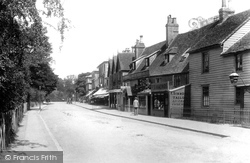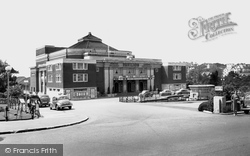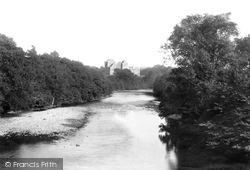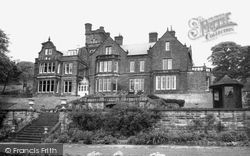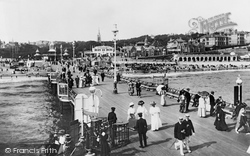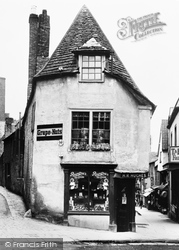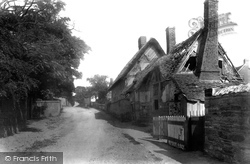Merry Christmas & Happy New Year!
Christmas Deliveries: If you placed an order on or before midday on Friday 19th December for Christmas delivery it was despatched before the Royal Mail or Parcel Force deadline and therefore should be received in time for Christmas. Orders placed after midday on Friday 19th December will be delivered in the New Year.
Please Note: Our offices and factory are now closed until Monday 5th January when we will be pleased to deal with any queries that have arisen during the holiday period.
During the holiday our Gift Cards may still be ordered for any last minute orders and will be sent automatically by email direct to your recipient - see here: Gift Cards
Places
36 places found.
Those places high-lighted have photos. All locations may have maps, books and memories.
- Cardiff, South Glamorgan
- Barry, South Glamorgan
- Penarth, South Glamorgan
- Rhoose, South Glamorgan
- St Athan, South Glamorgan
- Cowbridge, South Glamorgan
- South Molton, Devon
- Llantwit Major, South Glamorgan
- Chipping Sodbury, Avon
- South Chingford, Greater London
- South Shields, Tyne and Wear
- Ayr, Strathclyde
- St Donat's, South Glamorgan
- Llanblethian, South Glamorgan
- Thornbury, Avon
- Llandough, South Glamorgan
- Fonmon, South Glamorgan
- St Nicholas, South Glamorgan
- Jarrow, Tyne and Wear
- Penmark, South Glamorgan
- Font-y-gary, South Glamorgan
- Maybole, Strathclyde
- Yate, Avon
- Oxford, Oxfordshire
- Torquay, Devon
- Newquay, Cornwall
- Salisbury, Wiltshire
- Bournemouth, Dorset
- St Ives, Cornwall
- Falmouth, Cornwall
- Guildford, Surrey
- Bath, Avon
- Looe, Cornwall
- Reigate, Surrey
- Minehead, Somerset
- Bude, Cornwall
Photos
5,054 photos found. Showing results 1,481 to 1,500.
Maps
2,499 maps found.
Books
1 books found. Showing results 1,777 to 1.
Memories
1,580 memories found. Showing results 741 to 750.
The Coombs Family From Kent Approz 1921 1935
My dad, lived with his family in Bolton upon Dearne from the age of about 3yrs in 1921. They were (like many others) very poor. My grandad, Frank Coombs (who my dad is named for) and my ...Read more
A memory of Bolton Upon Dearne by
Thorne As I Remember
So much and so little time; Green Top Primary School, happy days before the big move up to the Grammar School or North Eastern Road Secondary Boys. Mr Morris for metal work, Mr Snow for woodwork. Mr Colin Ella for religious ...Read more
A memory of Thorne by
Fishing In Hawhill Park Duck Pond In 1955
The 10 year old boy in the photo is me. I was fishing for sticklebacks. I remember a man pointing a camera at me. I lived at 62 Castleford Road opposite the library which is at the edge of the park. My ...Read more
A memory of Normanton in 1955 by
Good Ole Days!
My first school on moving from South London to 124, Brook Road was High Cannons at Well End. Then to Lyndhurst, a few teachers from memory : Tony Smith, Mr Thurston, Mr Fennel and who could forget Wendy Watford & her ...Read more
A memory of Borehamwood in 1960 by
Slate Mining
Slate miners of Staylittle and why they moved to the coal mines in South Wales, Grancher and his father were in this category. Did the slate mining in Staylittle stop?
A memory of Staylittle in 1880 by
Handley Page Estate
My father was transferred to Handley Page, Radlett from London in 1955. We moved to Bricket Wood where I lived until I got married in 1970. Remember playing on the swings and roundabout on the green, which was opposite ...Read more
A memory of Bricket Wood by
1942 At 14 Years Old My Life Changes
After our family home in Trafalgar Avenue, Peckham was damaged by the 'blitz' for the 3rd time, my mother decided enough is enough. She got in touch with her sister who lived in the country (South Norwood) to ...Read more
A memory of Croydon in 1942 by
Marlands
Does anyone have memories of Marlands in the early 1960's? It was owned by the 'Simpsons' and operated as a boarding school. Like me, most (if not all) of the children, were in the care of local authorities, coming to Marlands from ...Read more
A memory of High Halden in 1963 by
South Park
My mum went to South Park in the early 30s and I attended from 1962 to 1969. Recently, I have come across some memorabilia - would anyone be interested?
A memory of Lincoln in 1930
Church Road
I remember Church Road for the wonderful Holy Trinity Church (still there and a poignant link with old Bracknell). It also housed the old council offices where we paid our rates when we first moved to Bracknell from South London in ...Read more
A memory of Bracknell by
Captions
2,444 captions found. Showing results 1,777 to 1,800.
Parsons Fee leads south-west from Market Square past Prebendal House, the home of John Wilkes, the radical MP for Aylesbury from 1757 to 1764, and behind high brick walls.
In South Street, Shodfriars Hall is an echo of the four friaries established in the medieval town.
Whereas Marton and South Fylde worshippers had to bring their dead to St Chad's, the parish church of Poulton, people from the new town of Fleetwood had to come to Meadows Avenue, which used to be called
The church of St Peter, with its 14th-century tower made entirely of wood and supported inside by a framework of huge oak timbers, also has a 13th-century chancel and a south aisle added a hundred years
The clock turret of Moreton's most prominent building displays the date of its construction as 1887, and on the south wall is the coat of arms of the Redesdale family of Batsford Park who
This view looks south towards St Giles Cripplegate Church.
Haywards Heath grew up as a commuter town on the London, Brighton and South Coast Railway, whose isolated 1841 station for Cuckfield formed its nucleus.
A train has just left Holborn Viaduct Station and thunders south over the bridge, steam ballooning out over the roofs. Below, traffic crawls miserably up Ludgate Hill.
The timber porch is later, 1869, and the stained glass includes a small 15th-century crucifixion in a south window.
Being one of the few beaches south of Bude that can be accessed by car ensured that Crackington Haven had its compliment of holiday facilities, such as the hotel we see here with players just visible on
Cheddar Gorge is one of the most spectacular natural phenomena in south-west England.The gorge cuts its way out of the carboniferous limestone as if it was in the Peak District of Derbyshire; it is an
The chimneystacks of Lord Burley`s Hospital are an eye-catching feature along the south bank of the Welland.
Fore Street and the triangular medieval market place are the heart of the town: here we see the south side, behind the Market House's stand of horse-drawn cabs.
The River Eye flows through the village on its way to join the River Dickler, which in turn feeds the Windrush to the south of Bourton-on-the-Water.
Hayling Island is 4 miles long and 10 square miles in all, with popular sandy beaches in the south.
In 1888-90 a new nave and chancel were built over the north aisle of 1830, which left the earlier church as the new south aisle and chapel.
East and south of the church, the High Street has a number of good houses, including the 18th-century Elm Farmhouse in the distance.
Since it was gradually absorbed to become a suburb of Royal Tunbridge Wells, this small village south of Tonbridge supported a number of businesses in its commercial centre.
The newer Bournemouth International Centre, with its 3500 capacity auditorium, has now joined the Pier Theatre and the Wessex and Tregonwell Halls to make the city the entertainment capital of the south
Situated to the south-east of the town on the left bank of the river Teith at its junction with the Ardoch, Doune Castle derives its name from the Gaelic word 'dun', meaning a fortified place.
Nether End c1955 Baslow, situated 8 miles west of Chesterfield and 12 miles south of Sheffield, was once a part of the parish of Bakewell, but became independent in July 1869, taking with it
Bournemouth Pier stands above the original mouth of the River Bourne. Its construction marked the town's commitment to its role as a resort.
At the south end of Cheap Street, seen on the right, were the premises of H R Hughes; the building has a narrow three-sided front and a stone-tiled roof, also with three planes.
Situated to the south of Alcester on the Midland Railway line, Broom railway station was the interchange for a cross-country route linking up with the Midland main line from Rugby to Bedford.
Places (15471)
Photos (5054)
Memories (1580)
Books (1)
Maps (2499)


